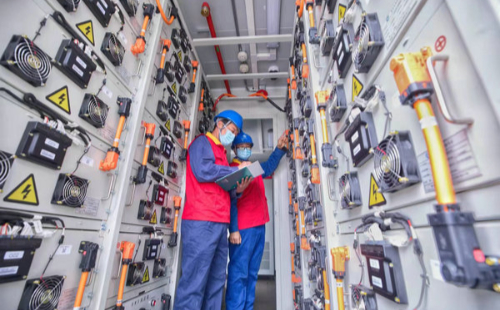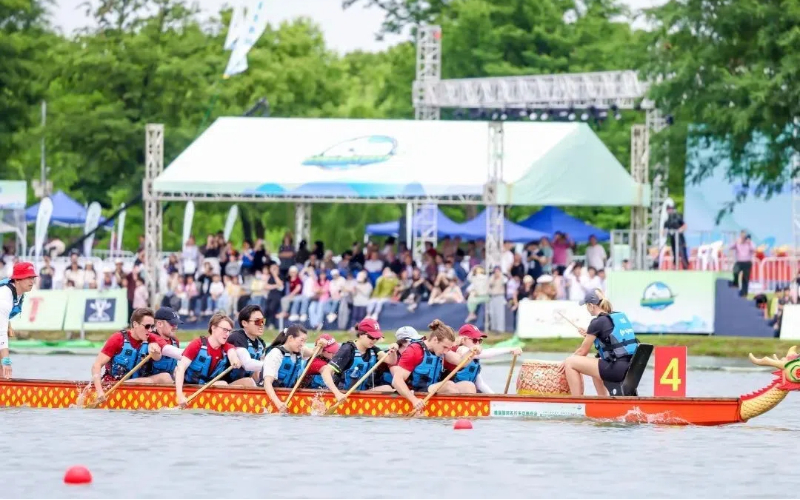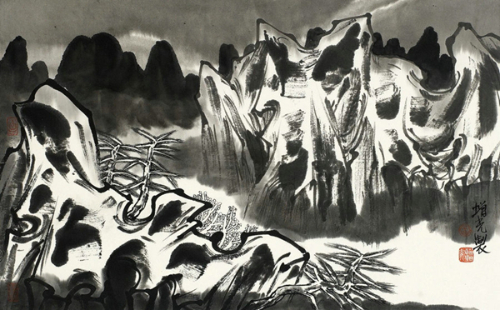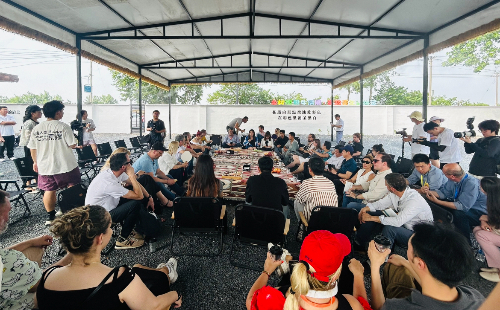Green Asian Games powered by clean energy

Workers check the energy supply facilities. [Photo by WU MINYONG/FOR CHINA DAILY]
Hangzhou has launched a Green Asian Games by preparing its competition venues to aid in the improvement of the city's air quality and attain sustainable development as China rolls out the road map for peaking carbon emissions by 2030.
A special team, consisting of "zero-carbon" engineers, has been established to reduce energy consumption and carbon dioxide emissions and provide services for venues such as green power supply, energy-saving renovation, and smart energy.
These engineers are from State Grid Hangzhou Power Supply Company and they are expected to provide 13 professional services during the Games, including the construction of zero-carbon transportation and the trade of green electricity for the venues.
The power will come from clean energy, which will be transferred by the UHV grid (ultra-high voltage grid) for the Hangzhou Asian Games venues and Asian Games Village from hydropower in the Liangshan Yi autonomous prefecture in Southwest China's Sichuan province and wind power and photovoltaics in the northwestern Ningxia Hui autonomous region and the Xinjiang Uygur autonomous region.
Besides the primary host city Hangzhou, which will host the largest number of events during the Games, five other neighboring cities have also stepped up their green energy capabilities.
In Ningbo, Xiangshan Asian Games Sailing Center and Banbianshan Beach Volleyball Center have recently completed the green electricity transaction with State Grid (Ningbo) Integrated Energy Co., Ltd, which will provide all of the green electricity support for these two Asian Games venues in Xiangshan during the Games, helping achieve the goal of zero carbon emissions of electricity consumption.
It is reported that the green electricity in this transaction is provided by 15 distributed photovoltaic power plants in Ningbo, covering the rooftop photovoltaics of industrial plants and the rooftop photovoltaics of rural residents.
This green power will provide nearly 400,000 kilowatt-hours (kWh) of clean energy for the two Asian Games venues and facilities in Xiangshan, which is equivalent to the burning of about 398.8 tons of standard coal. It also means reducing 280 tons of carbon dioxide emissions, which equals the amount of carbon dioxide that 12,911 adult trees absorb in one year.
From now until the end of the Asian Para Games, all 56 venues, which are located in the host city of Hangzhou and the co-host cities of Ningbo, Shaoxing, Huzhou, Jinhua and Wenzhou, will be powered by green electricity from western China as well as the State Grid's 136 photovoltaic power stations in Hangzhou.
"The green power deal of the Games has now reached 220 million kilowatt-hours, reducing carbon dioxide emissions by 115,400 tons," said Chen Rong, director of the venue construction and management department of the 19th Asian Games Organising Committee.
Green electricity refers to photovoltaic electric energy transmitted through ultra-high voltage lines from China's western regions such as the Qaidam Basin in Qinghai province, Jiayu Pass in Gansu province, and the Loess Plateau in Shaanxi province to East China's Zhejiang province.
Except for the energy saving, the recycling of materials and environmental protection were prioritized throughout the whole process of the preparation for the Games.
Since 2018, Zhejiang has built a landscape green belt along with the Asian Games Village, Qianjiang Century City, Xiaoshan District, and has carried out voluntary tree planting activities and has jointly constructed the Asian Games forests.
Over the past four years, more than 200 mu and more than 10,000 trees have been planted here.
Besides, as the only new Asian Games venue group in Hangzhou's main urban area, Hangzhou Gongshu Canal Sports Park is a large-scale comprehensive urban park integrating leisure green space, sports venues and commercial blocks.
The idea of building a park is based on the full consideration of protecting its surrounding rivers and trees to serve the Games as well as the public.
On July 8, 2020, the Park was awarded the three-star green building design label, becoming the first sports stadium building in Zhejiang to receive this honor.
Meanwhile, environmentally friendly technologies have been widely used in equipment, transportation and delivery services as Zhejiang endeavors to deliver a green Asian Games.
In Lin'an District, the Gymnasium of Lin'an Sports Culture Convention and Exhibition Center has been upgraded from holding the B-level competition to the A-level competition standard, which will host two events, taekwondo and wrestling during the Asian Games.
"The biggest feature of this venue is green energy saving. The top of the venue is not a light, but a natural light guide, which can collect the sunlight outside, satisfying the need of using light in the venue without a power supply," said Bao Chengcheng, deputy director of the 19th Asian Games Hangzhou 2022 Lin'an Preparatory Committee Office, local media reported.
Bao added that there are many lighting tubes in the main stadium. By setting lighting tubes and their accessories on the roof, natural light is introduced into the room and can be automatically adjusted according to the conditions to save energy and improve energy efficiency.
Fang Xiaoying and Zhang Xiang contributed to this story.





 play
play